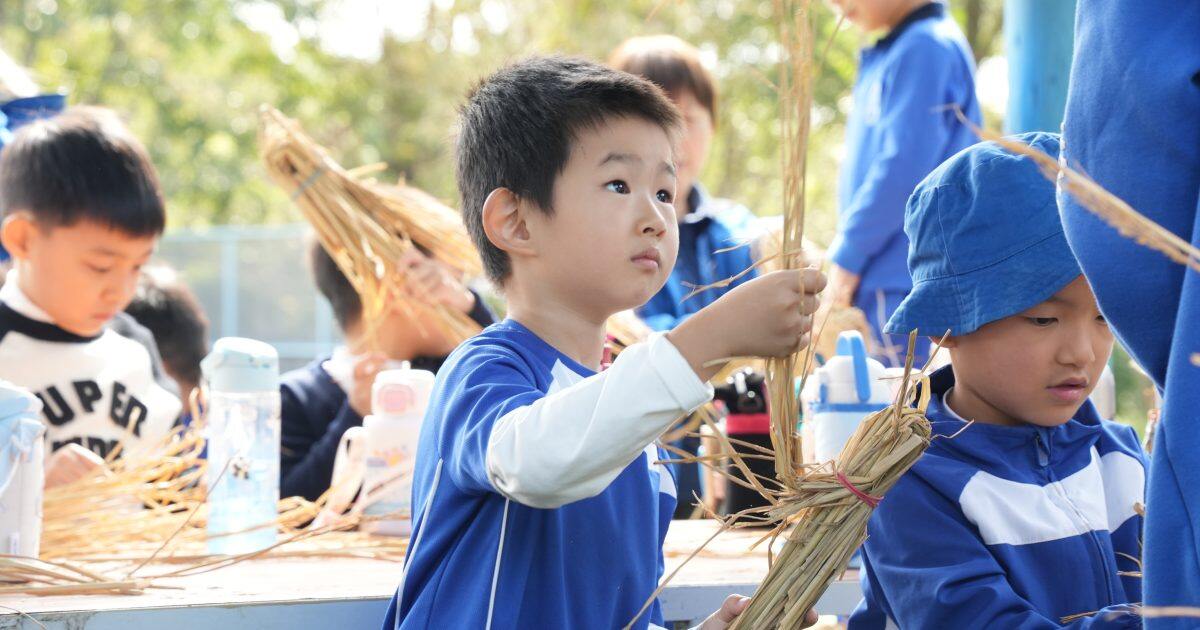“The transition from kindergarten to lower school is not about scaling mountains, crossing vast chasms, or stepping into an entirely different life. It is a gentle continuation — a natural unfolding of childhood.”
— Professor Yongping Yu, Early Childhood Education Specialist
Each May, the transition from kindergarten to lower school emerges as a prominent concern among parents and a focal point of preparation at WASCZ.
This initial academic transition in a child’s life is far more complex than it may first appear. It encompasses a comprehensive reconfiguration of learning environments, a shift in learning approaches, an upgrade in curricular content, and increasingly intricate social dynamics.
Such complexity often surpasses parents’ expectations. Without scientifically informed guidance and a thoughtfully designed bridging process, children may encounter emotional fluctuations, resistance to learning, or even the onset of self-doubt, hindering their ability to navigate this pivotal developmental stage with confidence and ease.
At WASCZ, we deeply recognise that the transition from kindergarten to lower school is far more than a change in physical setting. It is a multidimensional process involving physical and emotional adaptation, the development of self-care abilities, the acquisition of new learning approaches, and the strengthening of social skills. As the educator Rudolf Steiner once observed, “Education often begins at the moment when children challenge us.” These challenges signal moments of growth — windows of opportunity in which effective transitional education can lay the foundation for meaningful transformation.
How Does WASCZ Ensure a Smooth Transition from Kindergarten to Lower School?
At WASCZ, children in the Kindergarten stage gradually develop a range of essential learning competencies through carefully designed daily instruction and interactive teaching approaches.
“These core abilities include critical thinking and problem-solving skills fostered through hands-on exploration; bilingual proficiency in Chinese and English to support their transition to lower school and future academic development; cognitive awareness of life and the natural world through outdoor and nature-based learning; and the cultivation of key character traits such as empathy and responsibility,” said Ms Benaglia-Wood, the Executive Headmaster of Kindergarten.
As students enter the lower grade stage, they typically encounter significant shifts in their daily routines, learning approaches, and academic expectations.
“Life in the Lower School at WASCZ is more structured, with a broader and more diverse curriculum,” explained Ms Hany, Executive Headmaster of Lower School. “This well-organised learning environment enables children to gradually adapt to a more focused academic rhythm, establishing a strong foundation for their future educational journey.”
To bridge the distinct characteristics of WASCZ’s kindergarten and lower school stages, the one-month kindergarten–lower school transition curriculum is crafted around the model of “environmental familiarity + simulated practice + role experience.” This approach is designed to foster a sense of comfort and spark curiosity about the lower school environment, ensuring a smooth and confident transition for children.
Planting Seeds of Belonging Through Exploration
Establishing familiarity is the first step in the WASCZ transition curriculum. Kindergarten children visit lower school classrooms, engage with Grade 1 teachers, and explore various areas of the campus, including libraries, science labs, music and art studios, and sports fields. Through this curious exploration, they begin to form a natural emotional connection with their future learning environment. As unfamiliar spaces become familiar, a quiet sense of anticipation for learning starts to grow. We aspire for the environment to be more than just a physical space; it should serve as a “silent mentor,” nurturing children’s spiritual and emotional growth.
Weaving Emotional Bonds Through Interaction
Following the establishment of environmental familiarity, the second step is to build up an emotional connection and resonance. That is the children’s actual beginning of adapting to life in the lower school.
Through the thoughtfully designed “KG3–G1 Buddies” programme, each kindergarten child is paired with a Grade 1 peer. Together, they express themselves and share joy through team games and collaborate through joint art projects that foster listening, cooperation, and mutual respect. This programme plays an important role in children’s emotional adaptation to life in the lower school.
Guided by role models who are close in age, kindergarteners gradually develop a sense of aspiration — a heartfelt desire to step into the role of a lower school student.
Experiencing Future Growth Through Authentic Practice
To help children immerse themselves in the real rhythm and learning styles of lower school, they actively participate in a range of lower school lessons. These experiences introduce them to the cadence of English, the wonder of scientific discovery, the logic of mathematics, the breadth of global perspectives, the creativity of the arts, and the holistic balance of wellbeing.
By engaging in these classroom practices, children begin to develop genuine curiosity across disciplines.
Finally, the panoramic showcase “A Day in Year 1”, presented by older pupils, serves as a mirror reflecting the realities of life in the lower school. The joy of discovery, the occasional moments of confusion, and the quiet hopes for what lies ahead flow naturally through warm and genuine conversations, transforming into their inner strength.
“The most important preparation at this stage is to nurture children into proactive learners — individuals who are confident in their abilities and unafraid to try new things,” said Ms Benaglia-Wood. “Our transition programme is carefully designed to ensure that children are both academically and emotionally prepared for life in the lower school.”
When the environment becomes a mentor, interaction a bridge, and experience a spark for vision, children approach the next chapter of their educational journey not with anxiety, but with curiosity, confidence, and joyful anticipation.
The Warmth of Holistic Education Behind the Transition
The transition from kindergarten to lower school is not merely a bridge between two academic stages, but a vital link in the continuous journey of a child’s physical, emotional, and cognitive development.
At WASCZ, this process is far more than a one-off transitional programme — it is a deep and intentional practice grounded in the principles of holistic education. Through this approach, we gently and purposefully shape the foundations of each child’s character and learning capacities, laying the groundwork for lifelong growth and development.
From Emotional Safety to Growth Activation
During this crucial period, emotional security forms the foundation of all learning and development. It plants the seeds that enable children to navigate future challenges and changes with resilience. Only when children feel understood, accepted, and supported can they develop the confidence to embrace new environments, relationships, and experiences.
“By becoming familiar with the environment and meeting new teachers, children will establish stable emotional anchors,” explained Ms Benaglia-Wood. “Through the use of ‘social stories’ and the ‘buddy programme’, they are gently guided to pre-adapt to potential emotional shifts and learn coping strategies during the transition. This helps reduce anxiety and fosters more positive psychological connections.”
Cultivating Core Competencies Through Cross-Disciplinary Experiences
The core of cross-disciplinary curriculum experiences during the transition — encompassing English, science, mathematics, global perspectives, art, and wellbeing — is not merely to “preheat” knowledge for lower school. Rather, it integrates real-world tasks and collaborative projects to spark children’s internal interests in learning while nurturing essential, comprehensive skills.
Children engage in collaborative problem-solving through projects, test hypotheses through hands-on exploration, build confidence through self-expression, and develop communication and collaboration skills through conflict resolution. These activities reflect curiosity, responsibility, teamwork, critical thinking, creativity, and other core qualities that underpin the WASCZ’s educational system of holistic education.
“At WASCZ, students are encouraged to become critical thinkers and future leaders, ready to face global challenges with confidence and creativity,” said Ms Hany.
Building Community Awareness and Supportive Ecosystem
At WASCZ, education is a collective journey, not a solitary one. From the early exploration during the kindergarten-lower school transition to their continuous development, every child is supported by the wider WASCZ educational community. This includes the thoughtful guidance provided by kindergarten teachers, the supportive mentorship of lower school teachers, the diverse opportunities for growth in upper school, the positive influence of senior students, and the encouragement offered by houses and clubs. These cross-age and cross-role interactions form an invisible network of support, empowering each child to progress confidently within a safe and trusting environment.
This immersive sense of community not only nurtures students’ sense of belonging but also ingrains core values of respect, responsibility, cooperation, and service into their lifelong character. Through daily interactions, students learn to contribute to the community and find their role within collaborative efforts, gaining not only knowledge but also lifelong virtues and a sense of responsibility.
Connecting the Present to the Future
Of course, even with thorough preparation, it is entirely natural for parents to feel a sense of anxiety as their children approach this first significant milestone in life. In response, Ms Hany offered the following words of suggestions:
“It is perfectly normal for parents to feel anxious during key moments in their child’s development. However, this transition period should be seen as an exciting milestone in their journey of growth. Children are highly sensitive to their parents’ emotional cues, so approaching the change with positivity and calmness — and engaging in open, age-appropriate conversations — helps build their sense of security.
At the same time, taking the initiative to talk with children about what to expect in the next stage of school life can ease their fear of the unknown and gradually build their confidence.”
In fact, the transition from kindergarten to lower school is merely a microcosm of WASCZ’s broader lifelong learning support system.
From helping students adapt to new learning styles and develop independent study habits during the transition from G6 to G7, to preparing them for academic advancement and personal growth during the junior-to-senior high school transition, and eventually to guiding them in exploring career pathways and cultivating global perspectives before university — every step is carefully supported by the principles of holistic education.
Each of these transitions is not simply a stage-specific adjustment, but a vital opportunity for children to experience simultaneous growth in skills, emotional maturity, and core values at key developmental milestones.
As uncertainties in the world continue to grow, it is only through deep inner strength and a broad international perspective that children can be truly equipped to thrive in the future. At WASCZ, we believe that education is not about crossing isolated thresholds, but about laying down a path of continuous, natural growth. Each careful transition at WASCZ enables children to set out with composure, grow with confidence, and journey towards a future that is uniquely their own.
More News



